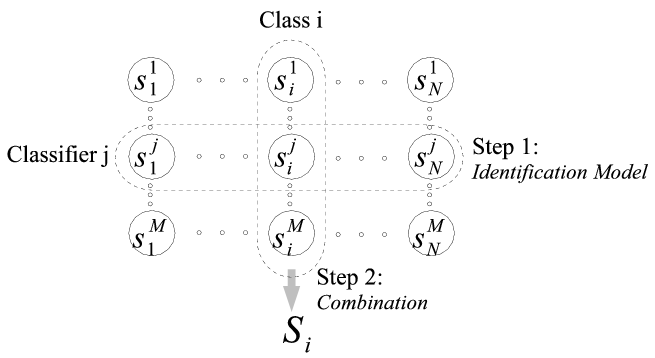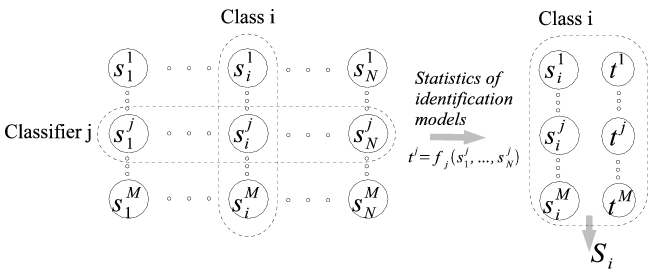As our research revealed, the matching scores assigned by one
classifier to different classes can be strongly dependent. Such
dependence influences the performance of the matcher in identification
systems. If a classifier is being combined with other classifiers such
dependence of scores should be accounted for in the combination
algorithm. The identification model concept was developed as a means of
tracking score dependencies.
In a two step application of identification model a score is first
normalized using trained identification model and a set of matching
scores produced by a classifier in the same identification trial. In
the second step, normalized scores are combined together by some
trainable algorithm.

In one step application of identification model, some statistics of the
identification trial score set is extracted by a predetermined
algorithm. A single trainable combination algorithm is appied
on the score and corresponding statistics to produce a combined
score for a class.

Main results:
- Identification models provide a natural way to transform low complexity combinations into medium II complexity combinations
- Identification model 'second best score' was developed showing good performance in accepting classifier decisions
- Likelihood ratio combination method was augmented by 'second best score' identification model in two step application
- Weighted sum combination method was augmented by
'second best score' identification model in one step application
- New methods showed significant performance improvements in both verification and identification systems

